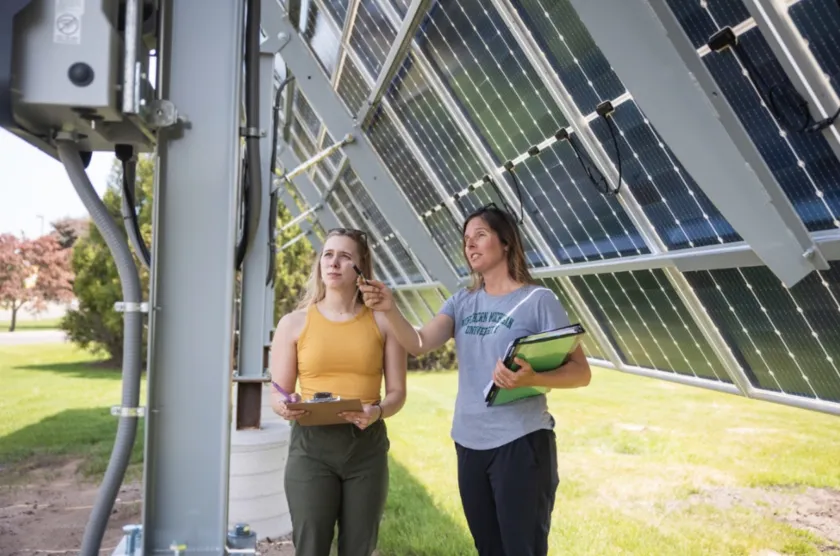Northern Michigan University's “Path to Carbon Neutrality by 2050” plan is now finalized, outlining the strategies for achieving that goal and targeted reductions in carbon emissions for each decade along the way. The completed plan aligns with NMU's core values and strategic priorities, which include a focus on building a culture of sustainability.
While NMU has already reduced its carbon footprint by more than 30% since 2010 and has one of the smallest footprints among the state's public universities, it is striving to decarbonize the campus.
“The plan is just the first step in an exciting journey," said Jes Thompson, NMU's newly appointed assistant vice president for sustainability and member of the NMU Carbon Neutrality Task Force. "We know where we're heading, and now we need to figure out how to get there. The path to carbon neutrality will require continued creativity, innovation and monitoring.”
Carbon is one of the leading greenhouse gases contributing to climate change. Achieving neutrality requires that any carbon emissions from NMU into the atmosphere is balanced by an equivalent amount being removed. According to the draft, NMU will progress toward that outcome via three targets: reducing emissions by another 25% by 2030 and 50% by 2040, then eliminating remaining emissions by 2050.
NMU has identified five key strategies for achieving its goal: reduced energy use; optimized infrastructure to minimize operational costs and emissions; a “right size” campus physical footprint to maximize use and efficiency of new and existing spaces; renewable energy investments; and increased carbon sequestration on university land.
The latter will be aided by NMU's location within the vast and relatively intact Northern Forest ecoregion. In addition to nearly 360 acres on its main campus, the university owns 511 acres of surrounding forest and fields. Carbon can be “captured” or fixed in place naturally by trees, soil, grasslands and oceans. The USDA Forest Service reports that, in one year, a mature live tree can absorb “more than 48 pounds of carbon dioxide, which is permanently stored in its fibers until the tree or wood experiences a physical event that releases it into the atmosphere, like fire or decomposition.”
A recent addition to the carbon neutrality plan before it was finalized is the following sustainable investment strategy:
“…Northern Michigan University is making a commitment to not invest in any stand-alone fossil fuel investment endeavors. Currently, NMU does not actively invest in fossil fuels; in fact, less than 5% of the university's investments include fossil fuels. In December 2023, the university's Board of Trustees approved an investment policy that exemplifies this commitment. The Endowment Fund will divest from direct or indirect ownership in companies involved in the extraction, production and distribution of fossil fuels by 2028.”
In addition to divesting, the NMU Board of Trustees agreed to increase sustainability-related investments by up to 15%. The move expands on related initiatives such as creating Thompson's new position and enhancing trustee support for the EcoReps student organization.
The carbon neutrality plan includes a timeline of related past and current efforts, along with a table of some of the potential pathways for achieving each of the three targets. To gather campus feedback on the initial draft, the task force held information sessions in October and made a flipbook and feedback survey available online. The finalized plan can be viewed here.
Media contact: Jes Thompson, jessitho@nmu.edu or 906-227-1057

